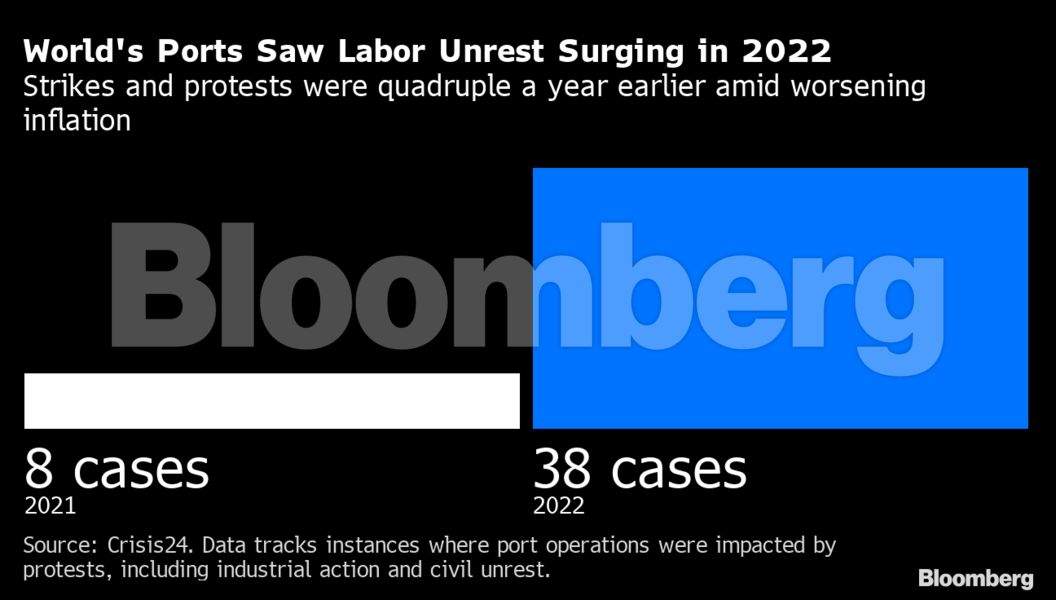There were at least 38 instances of protests or strikes affecting port operations last year, more than four times as many as in 2021 when the pandemic upended global trade, according to Crisis24, a maritime security consultancy. There were nine incidents in 2020, according to data beginning in July. Crisis24 changed its tracking system at that time, and comparisons with previous years are unavailable.
Workers are feeling the impact of higher fuel and food prices in the wake of Russia’s invasion of Ukraine while their wages have remained stagnant, said union experts, freight forwarders and shippers. That’s emboldening employees to demand more from their bosses.
With inflation still a threat, supply chains fragile and job markets tight, workers will continue to be a volatile force in the new year.
“Labour unrest is unlikely to decrease going into 2023, and may in fact worsen in the likely event that global economic conditions do not improve,” a spokesman for Crisis24 said in an e-mail.
 Bloomberg
BloombergMeanwhile, new variants of Covid-19 are still creating bottlenecks in supply chains, also giving workers more influence over contract negotiations, said John Ahlquist, a professor at the school of global policy and strategy at University of California San Diego.
Protests and strikes took place at major shipping hubs across the globe in 2022. South Korean truckers staged work stoppages twice in a six-month period, disrupting container operations in Busan. Congestion at some of Europe’s ports reached critical levels after German and UK dock workers walked out.
South Africa’s port operator declared force majeure in October as a strike by employees held up exports of fruits, wine and metals. Haiti was paralysed by violence last fall, with gangs taking control of a critical oil terminal and port.








